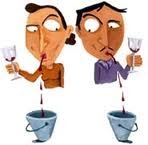Gin is a spirit which derives its predominant flavour from juniper berries (Juniperus communis). From its earliest beginnings in the Middle Ages, gin has evolved over the course of a millennium from a herbal medicine to an object of commerce in the spirits industry. Today, the gin category is one of the most popular and widely distributed ranges of spirits, and is represented by products of various origins, styles, and flavour profiles that all revolve around juniper as a common ingredient.
Prepared to be blown away by these amazing, truly South African, gins!
Jorgensen’s gin is handcrafted in small batches from fine traditional as well as contemporary African aromatic botanicals, featuring wild harvested tuscan juniper, angelica, orris and calamus roots, naartjie, cape lemon and cumcuat, grains of paradise, rare African ginger, exotic ohondua, coriander apricot kernels, liquorice, cardamom, nutmeg and clove.
This exception-to-the-rule gin is hand crafted in tiny batches in a copper pot still. The botanicals for each batch are suspended in the still above the purest wine spirit to bathe in its vapours. This gentle bathing gives the gin delicacy and finesse appreciated by almost nobody as they only make small amounts for one-in-a-million individuals.
Inverroche is an independent and family run distillery which lies at the confluence of the Goukou River and Indian Ocean on the southern shores of Africa .
Here, mellow summers and misty winters create the rich Cape Floral Kingdom
Inverroche premium pot still gins are handcrafted in small batches. What makes them unique is the addition of aromatic varieties of Cape fynbos South Africa Africa brings forth subtle seasonal variances in the botanicals. Therefore each year, Inverroche gin has it own nuanced identity.
You can taste and buy Inverroche and Jorgensen's Gin at Wine Village.
Please email us for further enquiries.














